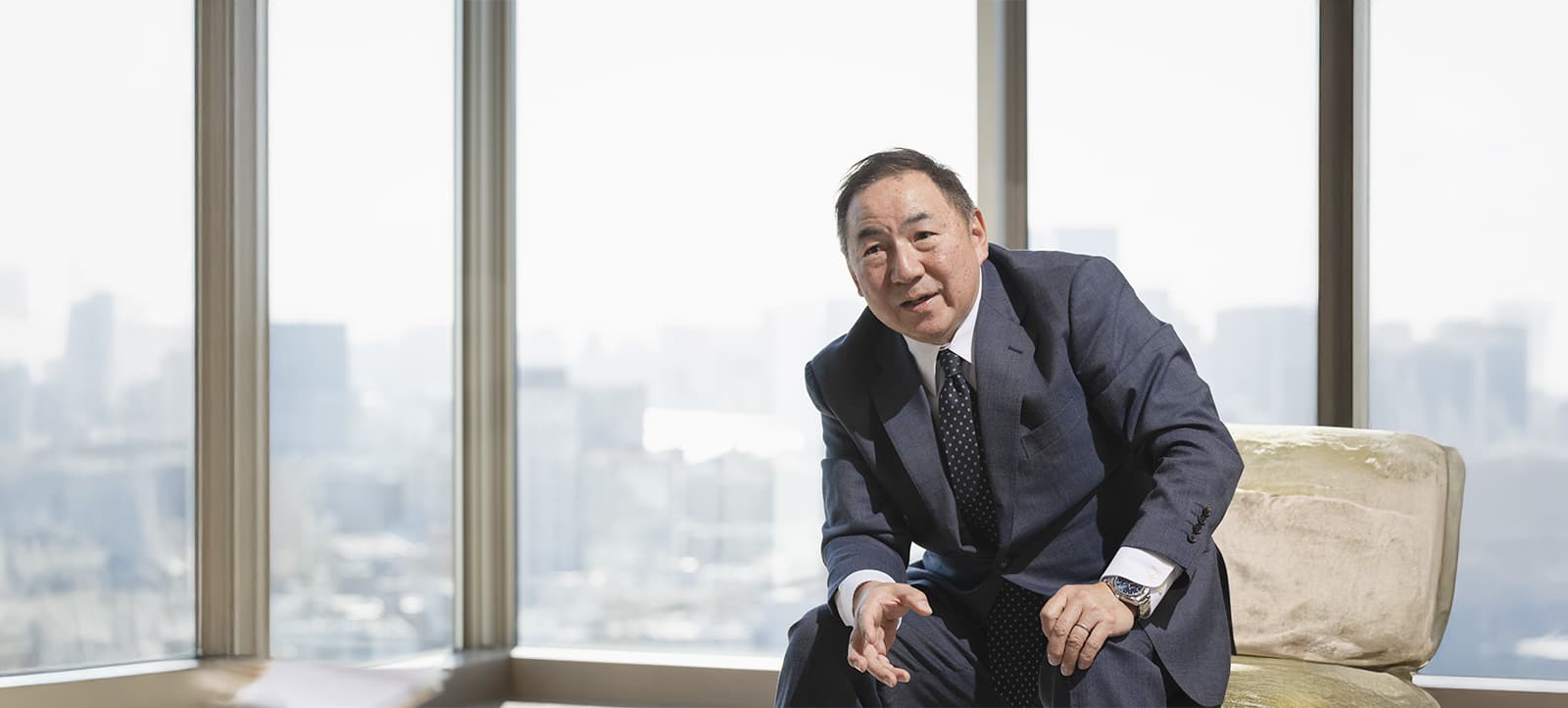My History
In 2015, I succeeded my father, Teiryo Maeda—a respected leader in the field of dialysis—as Chairman of the Maeda Institute of Renal Research and the Maeda Medical Group. The following year, in 2016, we opened Shakujii-koen Jin Clinic with the goal of bringing my three decades of experience in dialysis care to serve patients in the local community. From the start, we’ve focused on creating a safe, supportive environment for both patients and staff, while striving to provide care that evolves with the times.
Having worked in the medical field for many years, I have witnessed various challenges emerge with the changing times. One such issue is the rise of “elder-to-elder care,” a situation where individuals aged 65 or older are caring for or providing medical treatment to others in the same age group. In Japan, the aging of healthcare professionals is advancing. While many experienced doctors and nurses continue to play essential roles, it is becoming increasingly difficult for them to keep pace with digitalization and the latest medical technologies. Against this backdrop, the Japanese government is promoting digital transformation in healthcare, including the implementation of electronic medical records (EMRs). The Ministry of Health, Labour and Welfare has set a target to achieve an EMR adoption rate of 80% in clinics by 2026, and 100% by 2030. However, for healthcare workers who are accustomed to using paper records, the transition to digital systems can be a significant burden.
The widespread adoption of EMRs also faces challenges such as a shortage of technical support personnel, securing financial resources, and managing cybersecurity risks. It is not enough to simply push for digitalization—we must also reduce the burden on healthcare providers and establish systems that allow for the smooth adoption of new technologies. I believe that preparing for the future of healthcare and addressing the challenges directly in front of us is our responsibility—not only as individuals but for the entire healthcare industry.
The Present
As a leader, I place great importance on creating a workplace where each staff member truly feels, “This is where I belong.” I believe people can do their best work when they feel secure and supported—and that, in turn, leads to better quality care. A clinic filled with positive energy is also a place where patients feel comfortable and want to come back to.
To build a sense of belonging, it’s essential to ensure psychological safety and to foster a culture where team members can speak freely and take initiative. That’s why I make a conscious effort never to dismiss ideas with a quick “that won’t work,” and when something goes wrong, I try to stand in the other person’s shoes and ask, “What led to this?” rather than placing blame. Shutting people down creates hesitation, and over time, can lead to a workplace full of people who are simply waiting for instructions.
It’s also important to recognize and respect generational differences in values and communication. What seems normal or obvious to one generation might not translate to another, and this can easily create friction. That’s why I make an active effort to connect with younger team members—whether it’s by using tools like LINE or TikTok, or just taking time for everyday conversations. These interactions help build trust and give me insight into how younger staff view the world.
Above all, I believe the strongest foundation for any team is genuine appreciation. Psychological safety isn’t built through evaluation or judgment—it’s built through heartfelt thanks. Simple words like “I’m really glad you’re here” or “Thank you” can go a long way in boosting morale, encouraging growth, and ultimately strengthening the organization as a whole.
For the Future
I’m not a perfect person. When I come across something I can’t do, I simply ask, “Is there someone who can handle this?” If seeing me do that helps my team realize that even a leader doesn’t have to have all the answers, and makes them feel more at ease, then I consider that a success. That said, I’m always striving to be the strongest version of myself. And to me, being “strong” means having a clear sense of purpose, supporting those around me, and staying flexible enough to adapt as circumstances change.
Above all, having a strong core as a leader is essential. As times change, so do the roles we’re expected to play. Who I am in my 40s is different from who I’ll be in my 60s—in both mindset and stamina. That’s why I believe a good leader is someone who continues to question themselves, who remains open to change, and who is constantly evolving. That ongoing process of self-renewal is what I see as the foundation of leadership. Supporting others is just as important. I don’t see myself as someone who simply gives directions. I want to be the kind of leader who makes staff feel, “I’m glad he’s here,” and patients feel, “I’m glad I was treated by him.” If, at the end of my life, people can say, “I’m thankful he was there,” that would mean more to me than any award or accolade.
It’s now been ten years since I took over the organization from my predecessor, and there are still countless challenges in the Japanese healthcare system. Even so, I try not to approach them with a mindset of “must” or obligation. Instead, I focus on “may”—the idea that things might be possible. I believe in trusting your own potential and keeping an open, flexible approach to the future. For me, holding on to that “may” mindset is not only a way of leading, but also a way of leaving a lasting and meaningful mark on life.
